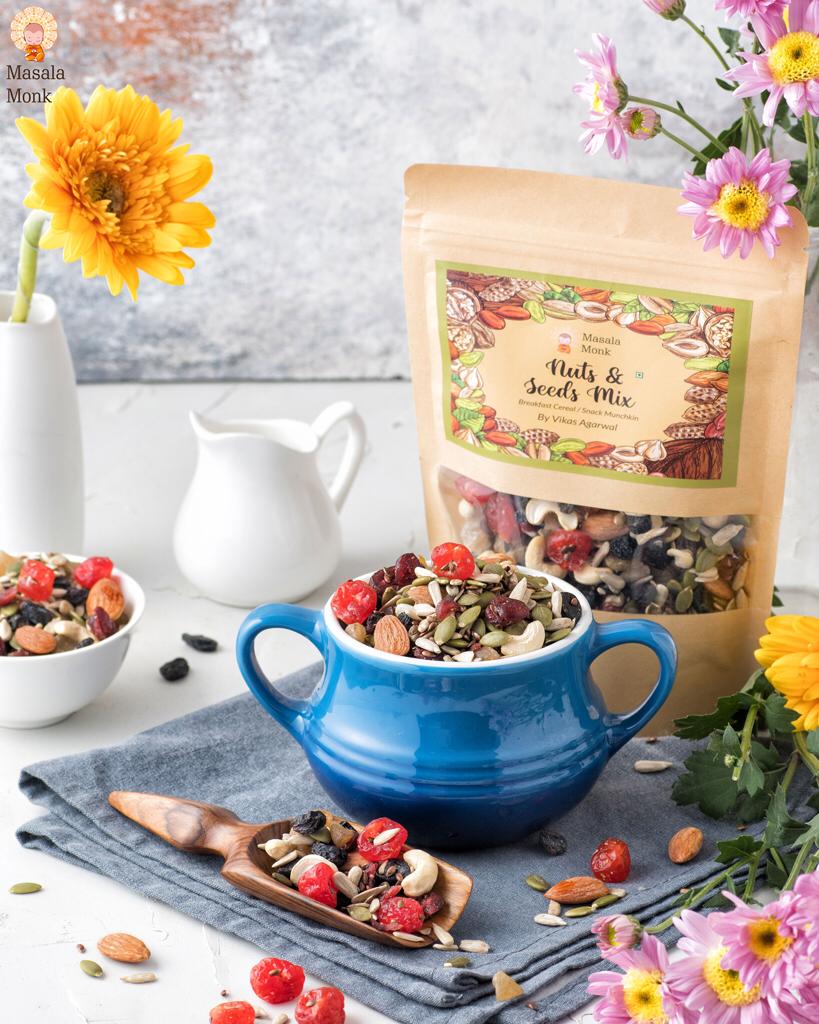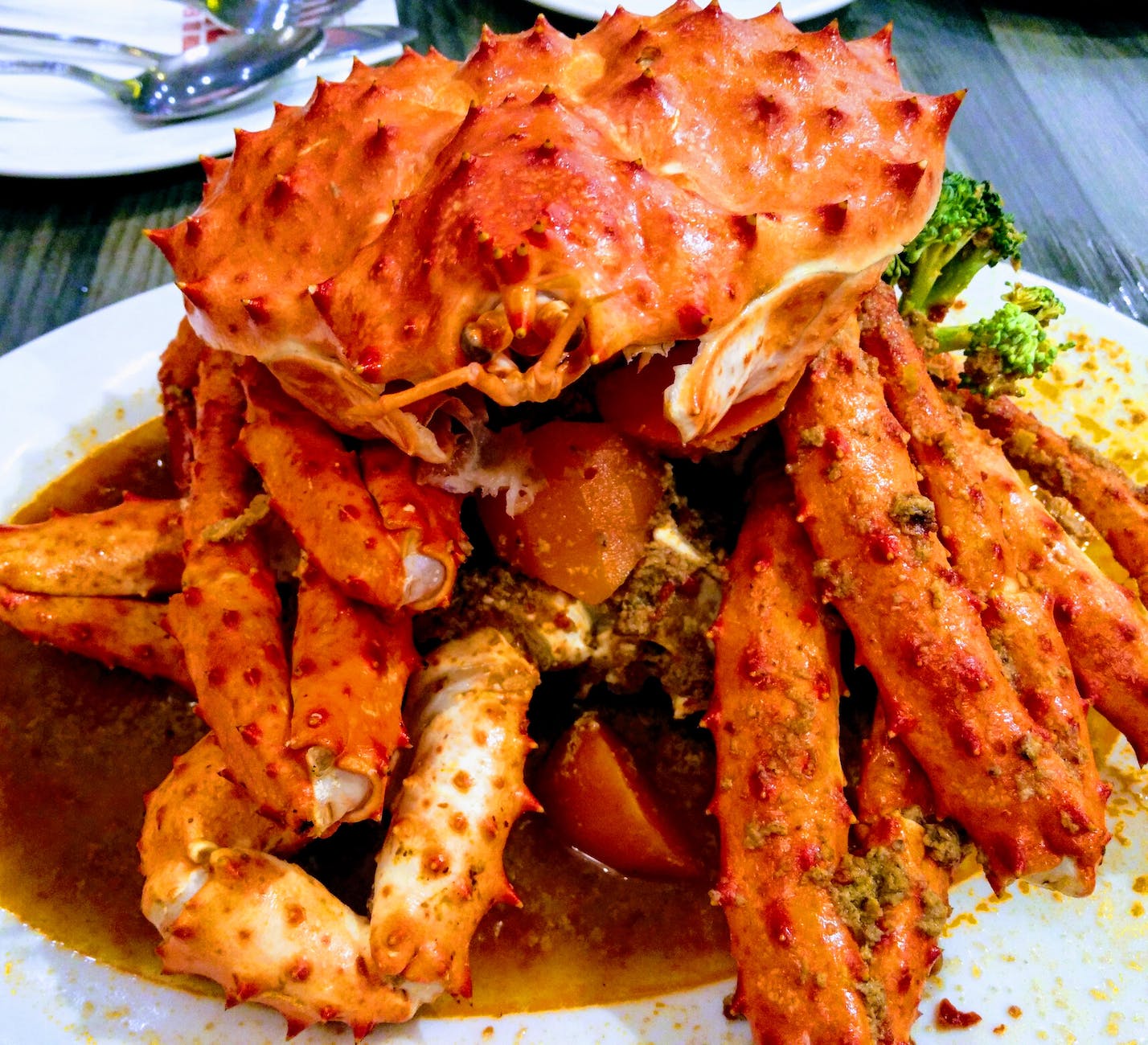
Intermittent fasting has emerged as a revolutionary approach to health and wellness, transcending the confines of a mere diet trend. The 16:8 method is particularly lauded for its simplicity and effectiveness. But the pivotal question is: What should one consume during that 8-hour window? Let’s embark on a comprehensive culinary journey tailored for intermittent fasting.
What is 16:8 Intermittent Fasting?
1. The Philosophy Behind Intermittent Fasting
Intermittent fasting isn’t just about skipping meals; it’s a strategic approach to eating. By cycling between periods of eating and fasting, you allow your body to tap into its fat reserves, leading to weight loss. But beyond that, fasting periods give the body a break, allowing it to repair and rejuvenate. The benefits of intermittent fasting are manifold, from metabolic enhancements to cognitive improvements.
2. The 16:8 Fasting Method Explained
The 16:8 method is one of the most popular intermittent fasting methods. It involves fasting for 16 hours and consuming all your daily calories within an 8-hour window. This method is flexible, allowing individuals to choose their eating window based on their lifestyle. For instance, if you’re an early riser, you might choose to eat between 7 am and 3 pm. Alternatively, night owls might prefer an eating window from 12 pm to 8 pm.
Foods to Prioritize During Your 8-Hour Window
1. The Power of Whole Proteins
Proteins are the building blocks of life. They’re essential for repairing tissues, making enzymes, and supporting muscle growth.
- Meat Lovers’ Feast: Opt for lean meats like chicken breast, turkey, and fish. Fish, especially fatty ones like salmon, are rich in omega-3 fatty acids, promoting heart health.
- Vegetarian Delights: Lentils, chickpeas, and black beans are protein powerhouses. Tofu, tempeh, and seitan offer variety and versatility. And let’s not forget the protein-packed punch of nuts, especially almonds and peanuts.
- Eggs: Whether scrambled, poached, or boiled, eggs are a protein-rich option suitable for any meal.
2. Embracing Healthy Fats
Gone are the days when fats were the dietary villains. Healthy fats are essential for brain health, hormone production, and absorption of certain vitamins.
- Avocado Love: These creamy fruits are not only delicious but packed with monounsaturated fats and fiber.
- Nuts and Seeds Galore: From walnuts to chia seeds, these tiny nutritional powerhouses offer a combination of healthy fats, protein, and fiber. Dive deeper into the best nuts for intermittent fasting.
- Oils: Extra virgin olive oil is perfect for salads, while coconut oil and ghee are great for cooking.
3. Complex Carbohydrates: The Energy Providers
Carbohydrates fuel our bodies, especially our brains. But it’s crucial to choose carbs that provide sustained energy.
- Wholesome Grains: Quinoa isn’t just trendy; it’s a nutritional gem. Brown rice, barley, and whole grain pasta are also excellent choices.
- Starchy Vegetables: Think beyond potatoes. Sweet potatoes, butternut squash, and beets are flavorful and packed with nutrients.
- Legumes: Lentils, chickpeas, and beans are not only protein sources but also rich in fiber and complex carbs.
4. The Colorful World of Fruits and Vegetables
These nature’s candies and greens are packed with vitamins, minerals, and antioxidants.
- Vegetables: From the dark leafy greens of spinach and kale to the vibrant bell peppers and tomatoes, the options are endless.
- Fruits: Berries are antioxidant-rich, apples provide fiber, citrus fruits are packed with vitamin C, and bananas offer potassium.
5. Hydration: The Essence of Life
Water is life. But during fasting, hydration becomes even more critical.
- Pure Water: The most straightforward and essential drink.
- Teas: Green tea offers antioxidants, while herbal teas can be calming. Black tea is a classic choice for many.
- Coffee Lovers: Black coffee is a go-to for many fasters. But if you’re looking for a twist, bulletproof coffee offers a blend of caffeine and healthy fats.
- Electrolyte Boost: For those intense workout days or when you need a flavor kick, homemade electrolyte drinks can be both refreshing and hydrating.
6. Dairy and Dairy Alternatives
These can provide calcium, protein, and other essential nutrients.
- Dairy: Greek yogurt, cottage cheese, and aged cheeses can be included. Opt for full-fat versions as they are more satiating.
- Dairy Alternatives: Almond milk, coconut milk, oat milk, and other alternatives can be used, especially if you’re lactose intolerant or vegan.
Foods and Drinks to Avoid During 16:8 Intermittent Fasting
As important as it is to know what you should be eating, it is also important to know what kind of food and drinks are best avoided during Intermittent Fasting.
1. Processed and Sugary Foods
These foods can quickly spike blood sugar levels, leading to a subsequent crash, which can make fasting periods more challenging.
- Sweets and Desserts: Candies, pastries, cakes, and most commercially-produced desserts.
- Processed Snacks: Chips, cookies, and many granola bars that are high in sugars and unhealthy fats.
- Sugary Cereals: Those that are coated with sugar or have high sugar content. Opt for whole grain or protein-rich cereals instead.
- Instant Noodles: They might be quick and convenient, but they often lack nutritional value and are high in sodium.
2. Calorie-laden Beverages
These can disrupt the fasting process and add unnecessary calories without providing satiety.
- Sugary Sodas: Carbonated drinks that are high in sugars and artificial flavorings.
- Fruit Juices with Added Sugars: While fruit juices can seem healthy, many store-bought versions are loaded with added sugars.
- Creamy Coffees and Lattes: Especially those with added syrups and sugars. If you’re a coffee lover, consider options like black coffee or bulletproof coffee without sweeteners.
- Alcoholic Beverages: Alcohol is high in empty calories and can impair judgment, leading to poorer food choices.
3. Fast Foods and Fried Foods
While they might be tempting, these foods are often high in trans fats, sodium, and other unhealthy ingredients.
- Burgers, Pizzas, and Fried Chicken: Especially those from fast-food chains.
- Deep-Fried Snacks: Such as fries, onion rings, and mozzarella sticks.
4. Artificial Sweeteners and Sugar Substitutes
While they might seem like a calorie-free alternative to sugar, some artificial sweeteners can still cause an insulin response.
- Aspartame, Saccharin, and Sucralose: Found in many diet sodas and sugar-free products.
5. Highly Processed Meats
These can be high in sodium, preservatives, and other additives.
- Sausages, Hot Dogs, and Certain Deli Meats: Opt for whole meat sources or those without added preservatives and fillers.
6. Dairy Products with Added Sugars
Dairy can be a part of a balanced diet, but it’s essential to choose wisely.
- Flavored Yogurts and Ice Creams: Many have high sugar content. Opt for plain Greek yogurt or natural alternatives.
While the 16:8 intermittent fasting method doesn’t prescribe specific foods to avoid, the goal is to nourish the body with wholesome, nutrient-dense foods during the eating window. By avoiding or limiting the above items, you can enhance the benefits of your fasting regimen.
Tailoring Intermittent Fasting to Your Needs
1. Based on BMI (Body Mass Index)
Your BMI is a measure that uses your height and weight to determine if you’re underweight, normal weight, overweight, or obese.
- Underweight: If your BMI indicates you’re underweight, prolonged fasting might not be ideal. Consider shorter fasting windows or alternate-day fasting.
- Overweight/Obese: Longer fasting periods might be beneficial, but always start gradually. The 16:8 method can be a good starting point, progressing to longer fasts if well-tolerated.
2. According to Age
Different age groups have unique nutritional and energy needs.
- Teenagers: Growth spurts, hormonal changes, and increased activity levels mean teenagers need more nutrients. Intermittent fasting might not be ideal unless supervised by a healthcare professional.
- Adults: Most adults can safely practice intermittent fasting. However, the intensity and duration should be based on individual goals and health conditions.
- Seniors: Older adults might have decreased energy needs but require nutrient-dense foods. Shorter fasting windows with a focus on protein intake can be beneficial.
3. Gender-Specific Considerations
Men and women have different hormonal profiles, which can influence their response to fasting.
- Women: Women’s menstrual cycles can be sensitive to calorie restriction. It’s essential to monitor for any changes in cycle regularity. Additionally, women with conditions like PCOS might find intermittent fasting beneficial, as explored in this article.
- Men: Generally, men might find it easier to adapt to intermittent fasting. However, it’s crucial to ensure adequate calorie and nutrient intake during eating windows.
4. Activity Levels
Your energy expenditure can influence how you should approach fasting.
- Sedentary: If you’re not very active, standard intermittent fasting protocols like 16:8 can work well.
- Active: Those who engage in regular exercise, especially high-intensity workouts, might need to adjust their eating windows to support recovery and energy needs.
5. Health Conditions
Certain health conditions can influence the suitability and approach to intermittent fasting.
- Diabetes: Blood sugar regulation is crucial. Always consult with a healthcare professional before starting intermittent fasting.
- Thyroid Conditions: Fasting can influence thyroid function, so monitoring and regular check-ups are essential.
- Digestive Disorders: Conditions like IBS or Crohn’s might benefit from regular eating patterns. However, some find relief with intermittent fasting. It’s individual and should be approached with caution.
6. Personal Preferences and Lifestyle
Your daily routine, work schedule, and personal preferences can influence your fasting window.
- Night Shift Workers: Might find it beneficial to adjust their eating window based on their active hours.
- Frequent Travelers: Adjusting fasting windows based on time zones and travel schedules can be beneficial.
7. Cultural and Spiritual Beliefs
Many cultures and religions have fasting traditions. Integrating intermittent fasting with these practices can make the experience more meaningful.
- Ramadan Fasting: This involves fasting from dawn to sunset, which can be integrated into an intermittent fasting routine.
- Yogic and Ayurvedic Practices: Ancient practices offer insights into fasting and detoxification. Sadhguru’s perspectives provide a holistic view.
In conclusion, while intermittent fasting offers numerous benefits, it’s essential to tailor the approach based on individual needs and circumstances. Always consult with a healthcare professional before making significant changes to your diet or fasting routine.
Benefits of the 16:8 Fasting Method
1. Weight Management and Fat Loss
- Caloric Reduction: By limiting the eating window, many people naturally consume fewer calories, leading to weight loss.
- Enhanced Fat Burning: Extended fasting periods can increase the body’s reliance on stored fat for energy.
2. Improved Insulin Sensitivity
- Regulated Blood Sugar Levels: Fasting can help lower blood sugar levels, reducing the risk of type 2 diabetes.
- Increased Insulin Efficiency: The body becomes better at processing glucose, leading to improved insulin response.
3. Enhanced Brain Health
- Neuroprotection: Fasting can increase the production of brain-derived neurotrophic factor (BDNF), which supports brain function and reduces the risk of neurodegenerative diseases.
- Mental Clarity: Many practitioners report heightened focus and clarity during fasting periods.
4. Cellular Health and Longevity
- Autophagy: This is the body’s way of cleaning out damaged cells and regenerating new ones. Fasting can stimulate autophagy, promoting cellular repair and longevity.
- Reduced Inflammation: Fasting can decrease markers of inflammation, a key driver of many chronic diseases.
5. Heart Health
- Improved Cardiovascular Markers: Fasting can lead to reductions in blood pressure, cholesterol levels, triglycerides, and inflammatory markers — all beneficial for heart health.
6. Hormonal Health
- Boosted Growth Hormone: Fasting can increase the secretion of growth hormone, which plays a role in muscle growth, metabolism, and health.
- Balanced Hormones: For women, intermittent fasting might help balance hormones and can be beneficial for conditions like PCOS, as discussed in this article.
7. Digestive Health
- Improved Gut Health: The break from constant digestion can help improve gut function and might alleviate symptoms of digestive disorders.
- Enhanced Metabolism: Fasting can rev up the metabolism, aiding in digestion and nutrient absorption.
8. Improved Relationship with Food
- Mindful Eating: The restricted eating window can make one more mindful of food choices, leading to healthier eating habits.
- Reduced Cravings: Over time, fasting can help regulate hunger hormones, reducing cravings and overeating.
9. Flexibility and Simplicity
- Ease of Implementation: The 16:8 method doesn’t require complex meal planning or calorie counting, making it easy to adopt.
- Lifestyle Flexibility: It can be easily adjusted to fit various schedules and lifestyles.
In conclusion, the 16:8 intermittent fasting method offers a holistic approach to health, going beyond just weight loss. It encompasses benefits that touch various aspects of physiological and mental well-being. However, as with any dietary approach, it’s essential to listen to one’s body and consult with healthcare professionals to ensure it’s the right fit.
Frequently Asked Questions (FAQs) about 16:8 Intermittent Fasting
1. What exactly is the 16:8 intermittent fasting method?
The 16:8 intermittent fasting method involves fasting for 16 hours and consuming all your daily calories within an 8-hour window. It’s a form of time-restricted eating that focuses on not just what you eat, but when you eat.
2. How does the 16:8 method differ from other fasting methods?
While there are various intermittent fasting methods, the 16:8 method specifically focuses on an 8-hour eating window. Other methods might have longer or shorter fasting durations, such as 24-hour fasts or alternate-day fasting.
3. Can I drink water during the 16-hour fasting period?
Absolutely! Staying hydrated is crucial. Water, black coffee, and unsweetened tea are typically allowed. For those curious about the role of coffee, this article provides in-depth insights.
4. Is it essential to stick to the same 8-hour eating window daily?
While consistency can be beneficial, it’s also okay to adjust your eating window based on daily schedules or activities. The key is to find a routine that’s sustainable for you.
5. Will I experience hunger during the fasting window?
Initially, some hunger is common. However, over time, many people adjust and even find that their appetite and cravings reduce, especially when consuming nutrient-dense foods during the eating window.
6. Are there specific foods recommended during the 8-hour eating window?
Prioritizing whole, nutrient-dense foods is essential. This includes proteins, healthy fats, complex carbohydrates, and vegetables. For snack ideas, consider nuts like almonds and peanuts.
7. Can I exercise while practicing the 16:8 method?
Yes, exercise can be incorporated. However, it’s essential to listen to your body and possibly adjust your eating window to support recovery and energy needs.
8. How does intermittent fasting impact metabolism?
Intermittent fasting can boost metabolism, promoting fat burning and enhancing energy utilization. This metabolic shift can be especially beneficial for weight management.
9. Is the 16:8 method suitable for everyone?
While many people benefit from this method, it’s essential to consult with a healthcare professional, especially if you have underlying health conditions or specific concerns like PCOS.
10. Can I practice intermittent fasting if I’m diabetic?
Always consult with a healthcare professional before starting any fasting regimen. Monitoring blood sugar levels and understanding how fasting impacts insulin sensitivity is crucial for diabetics.
11. How does intermittent fasting affect women differently than men?
Women’s hormonal cycles can influence their response to fasting. Monitoring any changes and adjusting the fasting approach is essential. For women with conditions like PCOS, intermittent fasting might offer benefits, as explored in this article.
12. Are there any side effects to the 16:8 method?
Some people might experience initial side effects like fatigue or headaches. Ensuring adequate hydration and nutrient intake during the eating window can mitigate these effects.
13. Can I take supplements while fasting?
Many supplements can be taken during the fasting window, but always check the label and consult with a healthcare professional if unsure.
14. How long should I try the 16:8 method before deciding if it’s right for me?
It’s recommended to try it for at least a month. This allows your body to adjust and provides ample time to observe any benefits or challenges.
15. Can I combine the 16:8 method with other dietary approaches, like keto or veganism?
Absolutely! Many people successfully combine intermittent fasting with other dietary lifestyles. It’s all about finding a balance that suits individual nutritional needs and health goals.
16. How does intermittent fasting impact sleep?
Some people report improved sleep quality with intermittent fasting. However, it’s essential to monitor any changes and adjust eating windows if sleep is disrupted.
17. What are the long-term benefits of the 16:8 method?
Long-term benefits can include weight management, improved metabolic health, enhanced brain function, and potential longevity benefits. The holistic benefits of intermittent fasting are vast and varied.
18. Can I drink alcohol during my eating window?
While moderate alcohol consumption can fit into the 16:8 method, it’s essential to be mindful of the type and amount of alcohol consumed, as excessive intake can negate the benefits of fasting.
19. How do I handle social events or dining out while practicing intermittent fasting?
You can adjust your eating window for special occasions or opt for healthier choices if dining out during your fasting period. Being flexible and making informed choices is key.
20. Will I lose muscle mass while fasting?
With adequate protein intake and resistance training, muscle mass can be preserved. It’s essential to prioritize nutrient-dense foods and engage in regular physical activity.
21. How does the 16:8 method impact digestion?
Many people report improved digestion with intermittent fasting. The extended break from eating can give the digestive system a rest, potentially reducing bloating and other digestive issues.
22. Can I drink coffee during the fasting window?
Black coffee without added sugars or creams is typically allowed. For a deeper dive into the relationship between coffee and fasting, check out this article.
23. How should I break my fast?
Breaking your fast with a balanced meal that includes proteins, healthy fats, and complex carbohydrates is recommended. This ensures that your body receives essential nutrients after the fasting period.
24. Are there any foods I should avoid during the eating window?
Limiting processed, sugary foods and calorie-laden beverages can enhance the benefits of the 16:8 method. Prioritizing whole, nutrient-dense foods can make a significant difference.
25. Can I adjust the fasting duration if 16 hours feels too long?
Absolutely! Listening to your body is crucial. Starting with shorter fasting durations and gradually increasing as you become more comfortable is a viable approach.
Conclusion
The 16:8 intermittent fasting method offers a flexible approach to health and wellness. By making informed food choices during the 8-hour eating window, you can maximize the benefits of this method. It’s not just about restricting your eating window; it’s about nourishing your body with the right foods during that time. As with any dietary approach, it’s essential to listen to your body and consult with healthcare professionals to ensure you’re meeting your unique needs.
Further Reading and Insights
For those eager to delve deeper into the world of intermittent fasting and its nuances, we’ve curated a selection of articles that offer specialized insights, tips, and perspectives:
Each of these articles is crafted to provide you with a well-rounded understanding, ensuring you’re equipped with the knowledge to make the most of your intermittent fasting journey. Dive in and enrich your experience!
Blog Tags: Intermittent Fasting, 16:8 Method, Health Benefits, Weight Management, Nutrition, Diet, Healthy Eating, Fasting Tips, Metabolism, Brain Health, Heart Health, Digestion, Exercise and Fasting, Women’s Health, Hormonal Balance, Hydration, Supplements.














